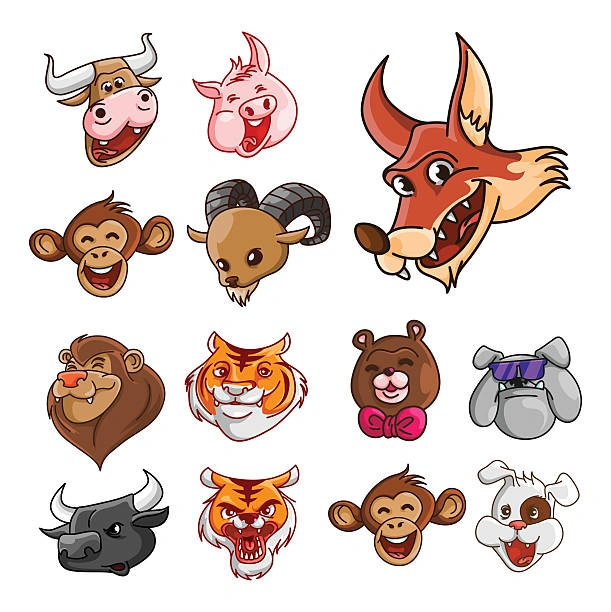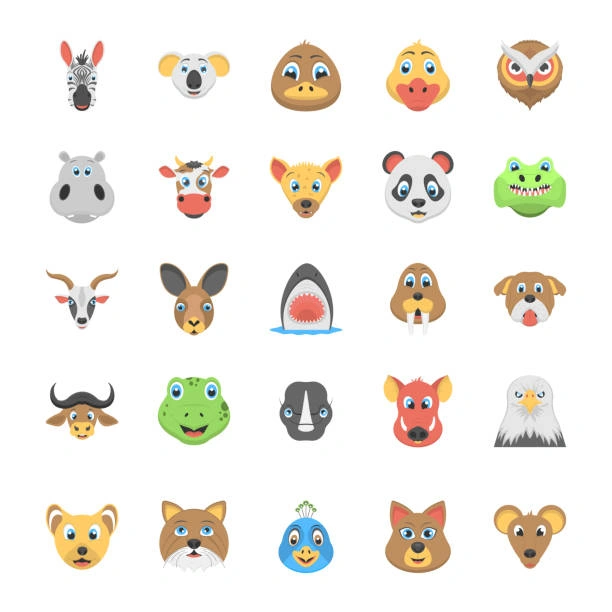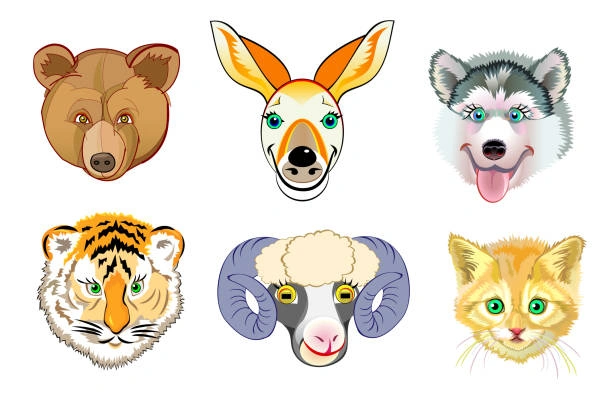Homophones are unique in the rich sphere of language because words can be flexible and not at all dumb when they turn and turn to create additional meanings. They are like little language games that one solves and makes our language and communication all the more complex and fascinating. However, there’s a twist when it comes to animal homophones and especially the new ones that have been discovered recently and seem to have elicited a lot of interest from language geeks, teachers and anyone interested in animals. Such autogenic paronomasias do much more than tickling the ears, and put quite a spice to our word list. In this blog post, I’d like to share with you the world of new animal homophones with examples, ideas, and the twist on how the aspects they bring to the process of language learning and language enjoyment.
New Animal Homophone
New Animal homophones as the name suggests are those words which may sound similar but have different meanings and most of the time with different spelling and these may refer to anything to do with the animal kingdom. A new animal homophone comes to live when a new word or usage comes in working the linguistic process and creating a new humorous tone. Some of these new homophones get their meanings from popular culture, technology or from current trends that give a twist to classical homophones.
For example, reconsider the word ‘hare’, which, in the traditional sense, refers to a fast-moving mammal that is akin to a rabbit. Recently, but for some reason, associated mainly with technology, the word “hair” has re-emerged beyond its primary definition, even in a playful manner, for instance, in the sphere of fashion/styling. The active participation of the words adds a plus for language users who keen to track the development of the English language.
In other words, a new animal homophone is not only about the phonetic or phonemic materials, which indeed are homophonic with those of reference, but also about the processes and products of the New Language. They provoke to learn what happened with the language after the changes in society, the transformations which occurred in the system of our vocabulary.
Can You Give Me Examples of New Animal Homophones

When learning new animal homophones, people discover the abundance of invigorating pairings that amuse the flavour of language. A familiar example is the homophonic pair ‘bear’ and ‘bare. ’ The distinction between ‘bear’ and ‘bare’ has been as follows ‘bear’ has referred to the large animal who hibernates while ‘bare’ has referred to something that is exposed. Nowadays, bare is in trendy slang referring to ‘a lot’ or ‘very,’ it adds a witty play when paired with bear.
Another excellent usage of homophones for fun is the contrasting pairing of ‘seal’ that means marine mammal, and ‘ceiling’, which takes on an entirely different meaning in the context of do-it-yourself home improvement, such as seal the ceiling. This generates a rather funny and appealing easily digestible mental image that is appealing to lovers of animals and personalities that are also lovers of language and grammar.
Also, thinking of the pair ‘crane, crayon’, the first can be referred to the large, long-necked bird, while the second term in contemporary culture triggers thoughts about color and childhood drawing. The use of these two words side by side gives an imagery of words that one can naturally gravitate to look for the connection between the word and the image.
How do new Animal Homophones add to our stock of words
These new animal homophones are not mere linguistic fun; they are agents of astonishing linguistic value. The reason behind getting involved such paradoxical pairs is to improve the quality of playfulness in the language and how such pairs can make people gain a better understanding of the language. This is particularly important so as to foster word affinity among students to educators who are in the process of training students.
Inasmuch as animal homophones contribute to the expansion of lexicon, they also stimulate creativity. Thus, when we read homophones our brain is signaled to link different meanings and contexts and thereby enhance the working memory. This is a great form of versatility in thinking that is seen to translate to a better variety of words that may be used by individuals in their day to day lives.
Moreover, new animal homophones that are produced create an interest because learners are able to easily discover patterns and connections. This process raises the level of learning of a new content and deeper understanding of the language, thus preparing the learners to articulate themselves fluently and elaborately.
Are There Any Fun Facts About New Animal Homophones
Absolutely! The list of new animal homophones accompanied by additional information is a delightful spectrum of knowledge that can hardly leave any language and animals’ lover indifferent. Not many people are aware that there are more than 6,000 homophonic terms in the English language. Of these, the animal homophones are special as they combine fun with a way to look at culture and language changes.

For instance, the homophone ‘wolf’ tends to switch between whether it means a classic trickster or a contemporary scoundrel. Although it is worn for the wild Canine, in new colloquialisms, “wolf” may be used for gorging food ravenously. This bimodal nature brings out flexibility of language and just how our cultural practices affect use of words.
Another cute fact is that, while, ‘puma’ commonly refers to a large cat, in today’s fashion world it is associated with sportswear due to association of the name with the sports wear company. This is because the language is not static; it adapts to the concept of branding and consumers.
Homophones seem to be quite necessary as far as the learning of language is concerned due to the following reasons:
Homophones have significant functions in language acquisition since they also involve phonetic learning and help to strengthen the recognition skills. They engage the learners demanding from them ability to distinguish between homophones , improve their listening and pronunciation skills. This is especially helpful to early learning students who are yet to undergo a number of procedures and phases of language development.
In addition, homophones can be used in intentional jokes and to play with the words and to make word play or pun. Any such language exercises helps learners to transgress beyond the ordinary and therefore are good at developing the language. Thus the creative element does not only assist in expanding and deepening learning but it also causes the development of confidence within the linguistic mode of communication.
Therefore, effective knowledge in homophones benefits learners in the course to enable them to unmask the challenges of language. It helps them to build value perceptions to words and to speak accurately leaving a strong footing for verbal communication.
What is a Homophone
A homophone is a linguistic term whereby there are two or more words in a language that may be pronounced in the same way but have different meanings and in most cases, the two words are spelt differently. Homophones are stil visible in today’s language because they bring a kind of amusement in language usage by enabling individuals to engage in word games. They are as critical building blocks of language that brings added value to our treasury of words and our ability to communicate.
For instance, two different sounding words that are spelled differently but have the same pronunciation are known as homophones such as ‘knight’ and ‘night’. Indeed, while the term “knight” describes a medieval soldier or warrior, “night” is used to describe the hours of darkness that follow the setting of the sun. These words show a possible variation of context in which homophones may be used but they are pronounced in exactly the same way.
Homophones are crucial as a basic foundation for grasping language and augmenting the level of literacy. This paper has shown that teaching students homophones benefits them in the way they decode and produce phonemes and also enhances their understanding of languages.
Are there any real animal names which sound alike with other words
Certainly! Animal names are quite versatile and can be spelled in a way that gives rise to immensely interesting homophone that would appeal to people with interest in language and animals. A typical one is ‘deer’, which means a graceful woodland animal, and ‘dear’,an affectionate term. This coupling demonstrates the ability to have fun with words and elicits learners into developing a perspective on language and feelings.
Another pleasant example is “gnu” and “knew. ” “Gnu” is the large antelope inhabiting Africa while “knew” is the past tense of the verb “know. ” It is a clear example of how two unrelated words can have similar sounding words.
An example of this is “seal” as opposed to the common word “seal”, meaning a marine mammal, and another rarely used word, “ceil”, meaning to line the inside of a space. These examples show the multilevel structural aspects of the word and how animal names contribute to enhancing the system of vocabulary basically associated with homophonic connections.
The impact of homophones to the language and communication:
From a Vygotskian perspective homophones are effective in language and communication because they provide avenues for imagination, expression of a humorous streak and an increased depth of comprehension. They bring in an additional element of thinking, thus encouraging the improvement of the language capacity of speakers and writers. This is specially pronounced in writers, where homophones are used deliberately for stylistic reasons, or for the purpose of making a pun.
In day to day conversation, homophones make the listener and even the speaker to be keen while listening or speaking respectively. Particularly, it leads to misunderstanding while the other ones encourage speakers to focus on the context and adjust the meaning if necessary. This brings about better communication and this is crucial aspect of life and business contexts.
Besides, these homophones also help in making up the variety of expressions and interpretations of the languages. They encourage the speakers to find several related meanings and relations; thereby fine tuned the speaker’s imaginative abilities in their use of language. This is in light of the fact that flexibility enriches and enhances the capability of language to communicate, making interactions interesting and diverse.
Homophones are significant for the learning of words in the following ways:
As for me, homophones are rather helpful learning aids for developing the learners’ vocabulary since they allow them to reveal new words and work on their language proficiency. Therefore, the use of homophones promotes the enrichment of the language by exposing, in contexts, various linguistic considerations to learners. This exposure helps them to improve their vocabularies and also their communicational abilities in one way or another.
Teaching and learning of homophones therefore also has the effect of developing phonetic knowledge in that learners are able to differentiate between similar sounding words. This is mostly an advantage for the young learners since they are learning how to listen and how to pronounce words. Learners, therefore, enhance their word-recognition skills and actually laid a solid ground for reading as well as comprehending written language.
In addition, homophones stimulate people to think creatively and to be as inventive as they possibly can. They encourage the learner to approach the language in a very fun-loving manner, with the main aim of having fun with words. This engagement helps in the retention of words used and creates the attitude of embracing language with more passion.
Are You Capable of Forming a Sentence with an new Animal Homophone
New Animal homophones are a great idea through which children can significantly improve the quality of their language and come up with beautiful sentences. Here’s an example:
Thus the deep thinking old wise owl said to itself the gnu will be grazing very peacefully under the cover of the moonlight.
Since the words ‘new’ and ‘gnu’ refer to different things – the former associating with knowledge while the latter a type of African wildlife, the picture painted is as funny as it is interesting, for language geeks and animal lovers alike. This is in line with the fact that learners ought to be inspired to come up with the best use of words that represent vivid images and meanings.
Another example is:
“The dear deer danced light through the wooded area leaving behind tiny prints on the ground. ”
Here the author uses the homophonic words such as ‘dear’ and ‘deer’ in order to boost the reader’s overtone sensation, which is rather helpful. These examples are inspiring to demonstrate how homophones add to the development of languages through creativity and imagination as far as they are concerned.
What Special Features Do the Animals Possess for Surviving in Their Environments, and How Might These Connotations be Expressed in Homophonic Words
Similar to the way in which animals are perfectly constructed to live in various conditions, they also have rhetorical translations of their unique characteristics. For example, the word ‘seal’ is social term that represents the marine mammal animal with a smooth body which is used in swimming. This adaptation is reflected in the word ‘seal’, signifying a closed state of a device, a play on the word that represents the water-dwelling mammal.
Another example is the word “bark”: in one context the word may mean the outer skin of trees, while in another context it refers to the sound made by a dog. Such a homology is illustrative of the versatility of language because the term ‘bark’ can refer to the outer skin of trees and, at the same time, to the sound that a dog makes.
These examples show that homophones are capable of expressing the peculiarities of the animal’s way of life and provide information concerning language and the fauna. Thus, such relations only help to add to the overall understanding of language and to behold beauty of working within its confines or the diversity of the animal world.
Can you name an animal which name sounds a lot like a quite ordinary word, and what information do you have about this animal
Another example of an animal whose name sounds like a different word is the ‘gnu’ which is pronounced like ‘knew’ The gnu is also referred to as wildebeest; belongs to the bovid family, large African antelopes, which are known to be migratory and social. They are intelligent animals that can be found in enormous groups and, in the sear for new pastures, can migrate long distances.
Cropping out the animals in order to graze on the grasses, the gnus ensure fertilization of the environments through dispersion of debris that would help in the growth of plants. There is something laughingly mischievous about it: their name is a pun on ‘knew’, and highlights the injustice that, having been around for hundreds of thousands of years, they have only recently become known to Westerners.
Thus, examining the ambiguous semiotic potential of the words – homophones, such as ‘gnu,’ we are provided with the understanding of the relationships between language and the nonhuman world. These connections encourage fascination and respect for the variety of the world of fauna and flora, and the variety of linguistic roots.
In what way does the sounds the different animals make affect the formation of terms in language especially in the case of animal homophones
Animal vocalizations determine the formation of so many words and homophones in a given language, or even the existence of existent words due to the imitative manner spoken in animals. For instance, the word ‘buzz’ is a homophone which describes a special sound produced by bees. This embodies the essence of onomatopoeic term that gives a raw feel to the sound of a bee which shows how animal sound precipitates language.
In the same manner, the word ‘moo’ is a phonetic word that sounds like the noise produced by the cattle. This whimsical term origin is related to the sound which is specific for these softly behaving animals, and expresses the connection between the tone and the word.
These examples will show that animal sounds are a source of incorporation of the sensory to the communicative domain. With the help of the analysis of homophones, which are animals’ names, we come to realize that language reflects the richness of the wildlife and, at the same time, is a work of art within its own right.
Here are some ideas about how one can teach children about Animal Homophones while at the same time teaching about the animals themselves:
Introducing basic homophones to children regarding animal names is an excellent chance to combine learning vocabulary with learning about animals. A most entertaining way is to use the concept of storytelling to help children create mere stories with animals with the use of homophones. This exercise promotes use of words and formation of stories while teaching the children about animals that they love.
One of the interesting lessons that can be implemented entails creating of the visual arts projects based on the use of animal homophones. For instance, children can illustrate in graphics homophones such as a ‘seal’ alongside a ‘sealed’ envelope. Children enjoy their activities and exercises as this method helps to enhance creativity and does not allow to forget words which has been learnt.
There are also teaching aids in form of games and activities like matching games, or crossword puzzle that could be used to teach. While using animal homophones during these activities, the child’s language ability gets enhanced together with getting knowledge on the animal kingdom.
How, Why, and in What Ways Does Sense-Making of new Animal Homophones Deepen Our Understanding of Language as Well as Nature
The study of animal homophones improves the appreciation of language because it shows that words and their meanings are related in some ways. It encourages to look at the fun and imaginative side of the language development, encouraging the feeling of the wonder. This appreciation transcends to the social aspect and the natural creation and the richness of human language and life forms.
Discussing homophonic terms referring to animals, one realises how language describes the essence of the animal world and provides glimpses of the specifics of the existence of the creatures living on our planet. It enhances the appreciation of language as it also expands one’s interaction with nature and with the environment thus widening the world perception.
Finally, animal homophones are capable of applying challenged language back to nature and uniting both, beauty and complexity of which should be admired. From this perspective involves a better appreciation of the beauty of language and the marvels of the animal world and thereby fosters a better understanding of our environment.








